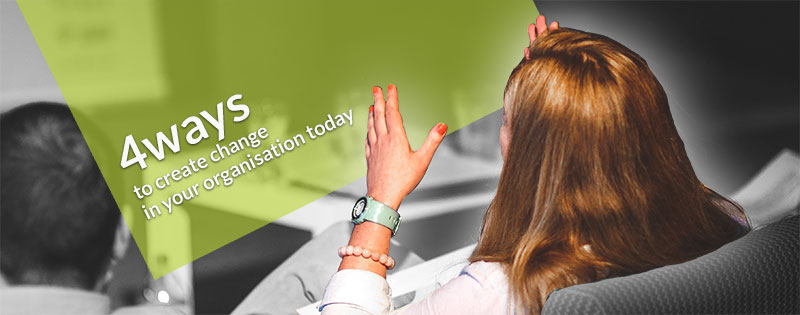A few decades ago, Kodak was a household name.
Any moment worth remembering, and Kodak was inextricably involved. When it comes to branding and staying front-of-mind with customers, it doesn’t get much better than the emotional connection of a ‘Kodak moment’.
Today, a ‘Kodak moment’ serves as something very different—a scary reminder of the powers of disruption. In the space of a few decades, Kodak fell from one of the most powerful companies on earth, to filing for bankruptcy protection in 2012.
By completely missing the potential of digital photography, Kodak taught us a valuable lesson: Organisations, not matter how big or small, must have the ability to change with the times, and the source of this needs to be internal.
Towards creating change
In retrospect, Kodak made one devastating mistake.
Instead of listening to the voice of their customers, they did with what they thought was best. Though they did make some progressive moves (in 1975, a Kodak engineer created the first digital camera), these were undermined by their continual attempts to direct customers back to print photography. Had Kodak been focused on listening to the voice of their customers, and basing business changes solely on their needs, the last few decades may have panned out differently.
Here’s a look at our suggestions for stay in tune to your customers, and ready for internal change:
- Start measuring. First things first, you need to know what your customers are thinking. Unless your business specialises in telepathy, you’ll need a validated, reliable method of doing this in real-time. There’s no use basing significant business changes on anecdotal stories, or old, stale data. Ensure that you’re receiving a constant flow of actionable feedback from your customers, and you’re well on your way to being in tune to their needs.
- Draw a line in the sand. Unlike Kodak, you need to have an awareness that what worked in the past won’t necessarily work in the future. There’s always room for improvement, and an organisation which rests on its laurels and isn’t seeking to improve, is one that’s on its way out. Create a clear culture in which your organisation always moves forward, and identify what improvement looks like based on your customers’ feedback.
- Create accountability. No organisation will become adept at change simply by measuring and setting standards. There needs to be accountability for the gap between what your customers are saying they want, and where your organisation currently is. When combined with transparency, this is an incredibly powerful tool for producing internal change agents.
- Give permission. The final step in creating an organisation-wide culture of change, is empowerment. Give permission to your employees to question the status quo, and make changes. Many long-term industry leaders have mastered this art—Virgin, for example, encourages staff to step outside the square, saying “It is up to those in charge to empower their employees – not rule over them.” This kind of culture must come from and be led by those at the top.
Change in action
We’ve seen what happens when an organisation doesn’t listen to the voice of their customers, but what about the converse? What does it look like when a company measures customer feedback, draws a line in the sand, has accountability and gives employees permission to change?
When Noel Leeming realised less tech-savvy customers were buying products but then struggling to get them set up, they decided to create Tech Solutions and Open Learning Centres as a response. Now, when someone buys their grandma an iPad for her 70th birthday, they no longer have to struggle through teaching her how to use it themselves. Instead, the team at Noel Leeming take it out of the family’s hands, set it up and spend a couple of hours teaching Nana how to use the iPad.
Changes like this are the answer to disruption. Not only does Noel Leeming’s improve their customer experience and loyalty, they also move closer to what their customers desire. Do this, and disruption will be something that happens to your competitors, not you.









